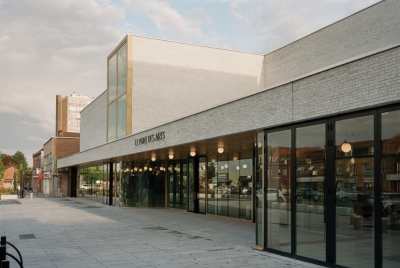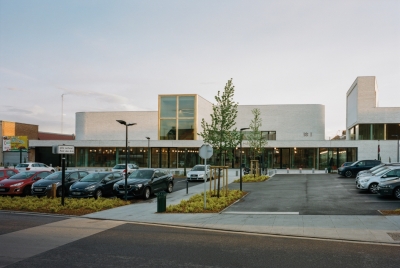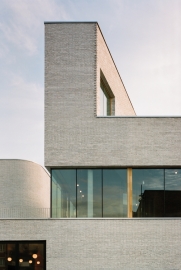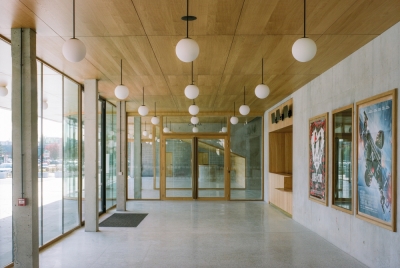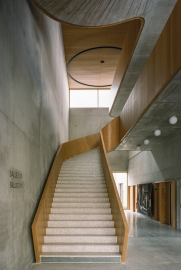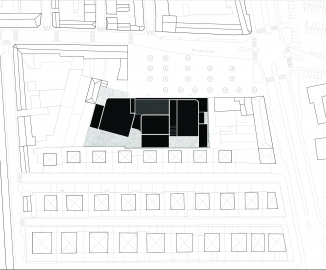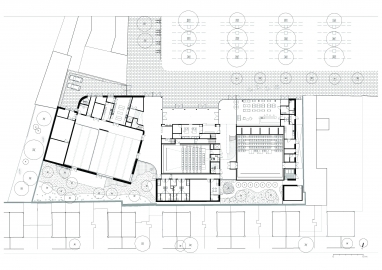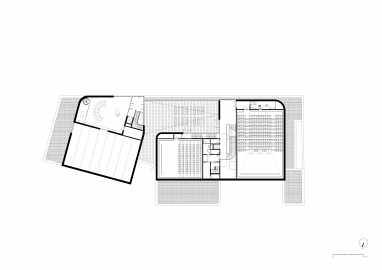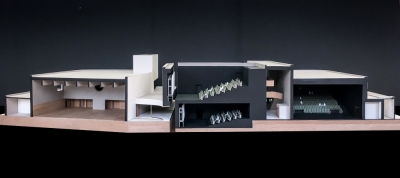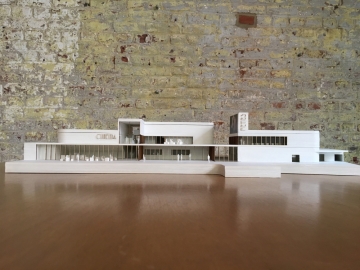Le Pont des Arts – Cultural Pole
Le Pont des Arts, a cultural and social facility in a working-class district of Lille, France
The Pont des Arts stands as a public establishment located on the outskirts of Lille, nestled within a working-class neighborhood that lacks adequate cultural amenities. This facility boasts an array of offerings, including three cinemas, a music rehearsal room, a versatile theater, and a brasserie that opens to a public forecourt.
This innovative facility represents an alternative response to the opaque and indifferent boxes that characterize suburban cultural halls. The project harmonizes with its physical environment, with particular attention paid to the social houses of the block. The architecture is both modest in its means but also takes inspiration and pride from local architectural monuments such as Robert Mallet Stevens' Villa Cavroy showcasing a design that is both resourceful in its execution and respectful of cultural heritage.
In today's digital age, cinema and music are readily accessible with just a click, yet here, people come not only to enjoy music and films but also to partake in a shared, communal experience that commences on the pavement, continues up the stairs, unfolds within the dimly lit cinema halls, and resumes afterwards. In this space, individuals gather in the foyer, in front of eye-catching posters advertising upcoming releases, forging connections, and sharing moments of camaraderie.
The public square features 3 cinema halls, another dedicated to music and theatre, and a third dedicated to the music school. Three volumes emerge above a plinth that is filled along its entire length with a window reflecting the lights of the city. The building has none of the monumentality of multiplex cinemas; on the contrary, it plays with the motley assemblage of houses and shops that surround it. The car park in front of it finally anchors it in the landscape at the entrance to the town, reminiscent of a shopping strip. As spring unfolds, the gable above the village hall comes alive with projections, enveloping the town in a cinematic ambiance during long summer evenings.
The project's commitment to sustainability rests on two key pillars:
Materials: Traditional masonry construction employing locally sourced solid brick is a central element. The selection of materials is intentionally limited to brick and concrete blocks sourced from a local, cost-effective factory. Additionally, oak is employed for interior furniture and woodwork. The project demonstrates a thoughtful consideration of the production chain and local manufacturing methods, promoting sustainability from the ground up.
Temporal Sustainability: It achieves this through the utilization of low-maintenance materials. Brickwork, recessed, thereby protected wooden joinery, solid wood flooring and locally manufactured tiles contribute to durability and environmental responsibility.
Furthermore, a unique aspect of the project is the creation of textile tapestries paying homage to the town's industrial textile history and infuse a domestic dimension into the facility. Much like historical tapestries that narrated stories of the past, these modern textile pieces tell the story of cinema, adding a culturally rich layer to the architectural of the project.

